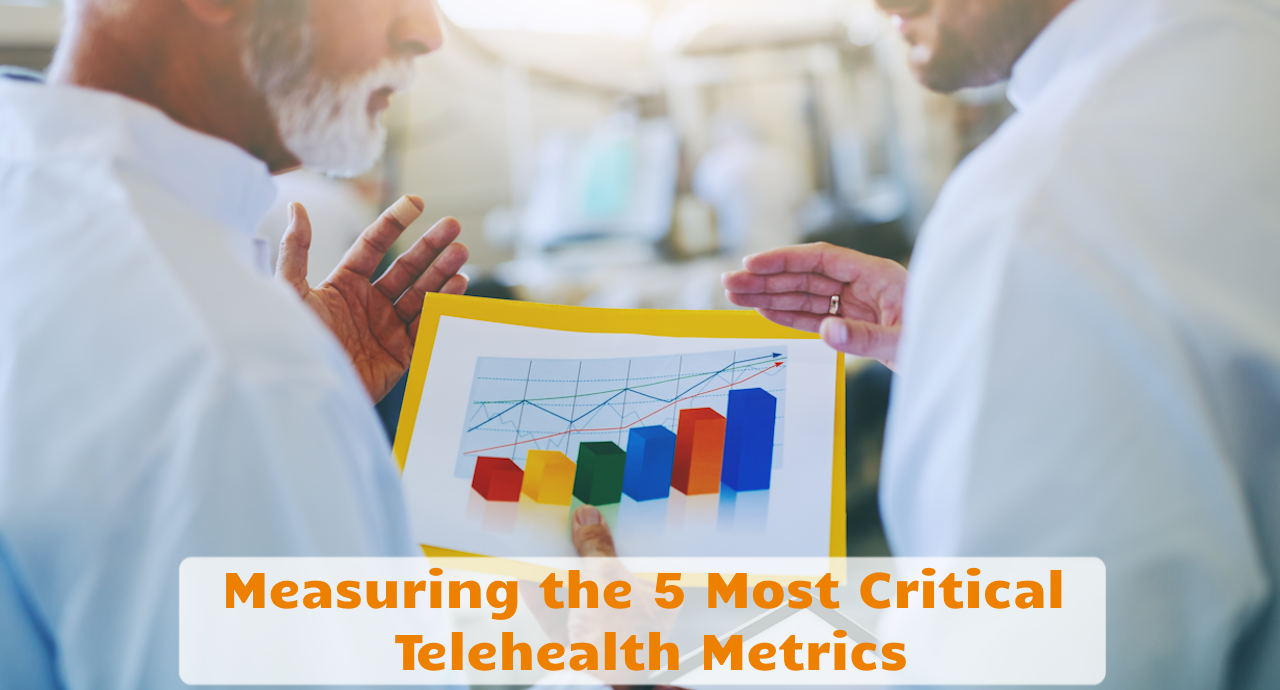In last week’s article I laid out a simple framework of five key metrics that telehealth leaders need to pay attention to when it comes to measuring telehealth success. They are:
- clinician satisfaction
- patient satisfaction
- technical performance
- visit volume
- visit reimbursement
But how do you actually collect those metrics and what data should you be expecting or be satisfied with? That is the focus of this week’s Telehealth Tuesday column.
Gauging Satisfaction: The Format
In the set of success metrics, the first two are about the clinicians’ and the patients’ satisfaction with the telehealth service overall. The easiest way to get at this data is through a quick survey.
In order to ensure high participation, though, the collection of the data must be tailored to the preference of the users you are collecting the data from.
There are three pragmatic approaches that we have implemented with clients to obtain satisfaction data: through interviews, by asking to complete a written survey, or by asking to complete an electronic survey.
From a data analysis and reporting perspective, the electronic collection is obviously the preferred one, as the collected data does not have to be transcribed for analysis.
But getting clinicians or patients to click on a link and fill out a form can be tricky, depending on a variety of factors. In some organizational cultures, clinicians don’t want to be bothered with much “electronic stuff” and may prefer a simple written survey they can complete in 30 seconds or less. In other organizations (or when it is difficult to get the completed surveys back), clinicians may be willing to complete online surveys, if they are easy to find and easy to use.
For patients, we have found mixed participation with electronic surveys, although the acceptance of patients to use electronic tools is growing, given the strong convenience afforded by telehealth. A good starting point to collect patient satisfaction data are also post-visit interviews, ideally incorporated into the post-visit process.
Gauging Satisfaction: The Frequency
Driven by the principle that data collection should always drive decision making or actions, we realized a few years back that in order to optimize virtual care, we don’t have to collect the data ALL the time.
Rather, our clients are collecting satisfaction data for patients and clinicians only 2-3 times a year and only for a few days. That approach prevents survey fatigue and also yields much richer responses in the free-text answers, which in turn drives actions.
Gauging Satisfaction: Maximizing Participation
Of course the data is only as good as the collection method, so we want a high degree of participation – not just by those who are dissatisfied with the experience. So we need to make it important and easy.
The level of participation in the survey for the clinicians depends on three key factors — the awareness of why collecting this data is important, confidence in the leadership team’s track record of acting on feedback, and the ease by which to submit the feedback.
The first two factors need to be addressed by the leadership team at the launch of every “satisfaction survey period”. To make completing the survey easy, we offer clinicians the option to simply complete a simple paper survey that has a single row for each telehealth client appointment. It typically takes less than 1 minute to complete and can be easily transcribed.
To ensure a high level of patient participation, we also ask clinicians to directly ask their patients at the end of a virtual care visit, whether they could take a few minutes to complete a survey, as “we are constantly looking for ways to improve your video visit experience”.
Gauging Satisfaction: The Questions
To gauge satisfaction, the surveys we develop with our clients typically ask physicians and patients 4-6 questions, depending on the specialty and the anticipated areas of optimization.
The basic questions that get at the experience with the technology are the patients’ and clinicians’ ability to clearly see and hear each other and the ease of connecting.
The key question for patients is their likelihood to “recommend telehealth with this clinician to friends and family” (which allows the calculation of a net promoter score). This metric allows for easy benchmarking against other world class services (e.g., Disney’s net promoter score is in the 70s).
For clinicians the key question that yields the most insight is whether this visit was “as good as an in-person visit”. The psychology behind that question is that it also helps clinicians to recognize the value of this way of providing care that is still “uncomfortable” to many.
Measuring Technical Performance
The third key metric is the performance of the telehealth technology. Here “simpler is better” unless you have reasons to dig deeper into the data. The basic aspects of technical performance are clarity of audio and video, overall connectivity, and interrupted or dropped connections.
Merely the satisfaction with the audio and video (as described above) alone can provide good insights. But also a set of technical statistics (such as calls interrupted, or calls abandoned) that could hint at potential problems should be looked at if they are easy to obtain.
As always, metrics should be collected to drive decision making, so if it is unclear how an organization would act on certain data, it should not be collected.
By the way: to act on poor technical performance on the patient end, the solution may either be a Telehealth TechCheck or working with the community to offer alternative access points, such as in libraries.
Financial Performance Metrics
The final two key metrics are about the visits volumes and reimbursement information.
For visit volume, the absolute number of visits (which can be obtained from your scheduling or your billing system) is not as much of interest as it is in the context of the in-person visits and compared to the total number of visits in the same period in previous years.
Other ways that we have analyzed and presented the data is to compare different locations/clinics, look at utilization by specialty (e.g., primary care vs. behavioral health), or even by provider level – physicians vs. advanced practice providers such as PAs or NPs.
For the reimbursement data, which could fill a whole series of articles, it is important to track reimbursement by payer and by modality, i.e., in-person, video-based telemedicine, telephonic telemedicine, etc.
Most organizations should still keep an extra eye on the use of audio-only (i.e., phone calls) visits, as they are either reimbursed at a much lower rate or where the current reimbursement may go away.
Another performance metric that is emerging with our current set of clients is the rate of no shows for virtual care visits compared to in-person visits. When the no show rate for virtual visits is much lower than as for in-person visits, tThis metric can provide valuable propaganda to talk about the clinical efficacy of virtual care to ensure the continuity of care.
Benchmarking against the Best



But to truly assess the performance of telehealth, it is better to compare the results with those of other organizations.
With regard to those five key metrics, here are results that we see our best clients achieve:
- Physician Satisfaction: 4.3 or better on a 5-point Likert scale
- Patient Net Promoter Score: 70 or better (but even 50+ is great)
- Technical Performance: 99% uptime, no systemic/repeated failures
- Visit volume: not declining
- Reimbursement: no more than 10% reduction in revenue
So — how are your telehealth services measuring up against those benchmarks? Are you regularly measuring those key metrics and take action on them?
Would you like to know how to get started with telehealth performance measurement? Then contact me through email, text, or zoom.








To receive articles like these in your Inbox every week, you can subscribe to Christian’s Telehealth Tuesday Newsletter.
Christian Milaster and his team optimize Telehealth Services for health systems and physician practices. Christian is the Founder and President of Ingenium Digital Health Advisors where he and his expert consortium partner with healthcare leaders to enable the delivery of extraordinary care.
Contact Christian by phone or text at 657-464-3648, via email, or video chat.






